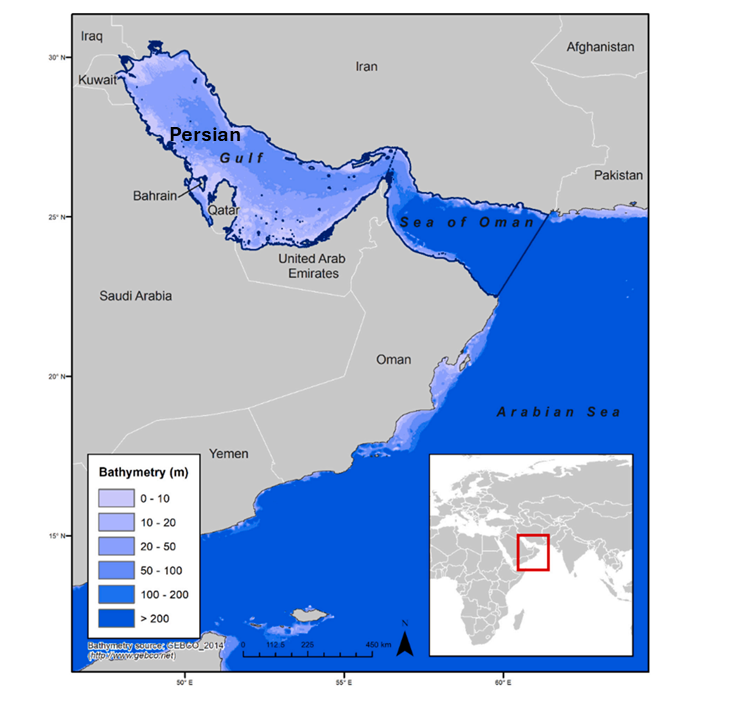Abstract
Desalination has played a critical role in the economic and social development of countries bordering the Persian Gulf. Current seawater desalination production exceeds 20 million m³/day and is projected to reach 80 million m³/day by 2050 (AGEDI, 2016). While it provides essential water resources, its environmental impact includes increased marine pollution, thermal discharge, and habitat degradation, which threaten biodiversity, fisheries, and coastal communities (Lettemann and Höpner, 2008; Dawoud et al., 2020). Without mitigation, by 2050, desalination and climate change could elevate water temperatures by 3°C across 50% of the Gulf, affecting marine ecosystems (AGEDI, 2016). Immediate actions such as regulatory reforms, technological advancements, and multidisciplinary research are recommended to ensure sustainable desalination development.
Introduction
The Gulf Cooperation Council (GCC) nations—Bahrain, Kuwait, Oman, Qatar, Saudi Arabia, and the UAE—have experienced rapid economic growth, leading to a significant increase in water demand (United Nations, 2017). The arid climate has necessitated reliance on desalination since the 1950s, with the Gulf states now depending on it for over 50% of their water supply (World Bank, 2017). Despite its benefits, desalination introduces environmental concerns such as brine discharge, chemical pollution, and thermal impacts, potentially undermining sustainable development objectives (Lettemann and Höpner, 2008; Roberts et al., 2010). See Figure 1 for a geographic overview of the Persian Gulf region.
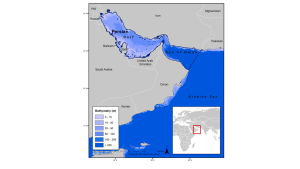
The Persian Gulf Marine Environment
The Persian Gulf is a semi-enclosed basin with extreme conditions, including high temperatures (up to 36°C) and high salinity (over 43 ppt) (Reynolds, 1993; Vaughan et al., 2019). It supports vital ecosystems such as coral reefs, seagrass meadows, and mangroves, which are already under stress from human activities (Sheppard et al., 2010). Significant biodiversity, including endangered marine species, is at risk due to cumulative environmental pressures (Burt, 2014). The Gulf’s economic contributions include fisheries, tourism, and coastal protection, all of which depend on its ecological health (van Lavieren et al., 2011). See Figure 2 for an illustration of marine biodiversity in the region.
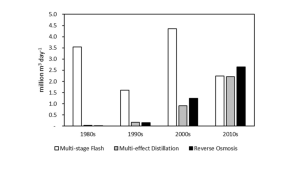
Current and Future Desalination in the Persian Gulf
Desalination has grown from 40,500 m³/day in 1970 to over 21 million m³/day in 2018 (GWI, 2018), with the UAE and Saudi Arabia being the largest producers (Fig. 3). While Reverse Osmosis (RO) is now the dominant technology, Multi-Stage Flash (MSF) distillation remains widely used. Future projections indicate an increase to 80 million m³/day by 2050 (AGEDI, 2016), raising concerns about intensified environmental impacts. Increasing efficiency and the adoption of renewable energy could help mitigate negative consequences.
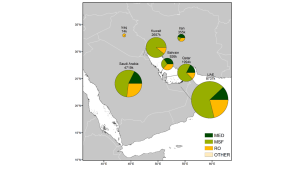
Environmental Impacts of Desalination
Marine Pollution and Ecosystem Disruption
- Impingement and Entrainment: Marine organisms, including plankton and fish larvae, are trapped in intake systems, causing mortality (Jenkins et al., 2012; Petersen et al., 2018a).
- Thermal Discharge: Elevated water temperatures from plant operations can disrupt marine habitats and contribute to coral bleaching (Burt et al., 2011; Howells et al., 2016).
- Brine Discharge: High-salinity effluent can alter local water chemistry, affecting benthic ecosystems and fisheries (Roberts et al., 2010; Jenkins et al., 2012).
- Chemical Discharges: Anti-scaling agents and biocides used in desalination pose potential toxicity risks to marine organisms (Petersen et al., 2018b; Cambridge et al., 2019).
See Figure 4 for a schematic representation of the desalination impact pathways.
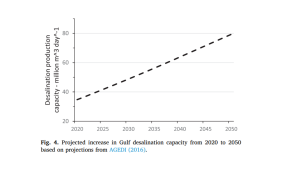
Impacts on Sustainable Development
Desalination contributes to freshwater availability but compromises marine ecosystem health (AGEDI, 2016). Regional studies suggest cumulative impacts could severely affect biodiversity, coastal fisheries, and coral reefs. A model projection for 2050 indicates:
- A third of coastal waters experiencing salinity increases >1 ppt (AGEDI, 2016; Dougherty et al., 2019).
- Over 75% of shallow areas (<20m depth) facing temperature rises >2°C (AGEDI, 2016).
- Potential mass mortality events for marine species sensitive to temperature and salinity changes (Petersen et al., 2018a).
Mitigation Strategies
See Figure 5 for a summary of policy recommendations. To balance desalination growth with environmental sustainability, the following measures are recommended:
- Behavioral and Regulatory Changes: Implement water conservation policies and efficiency incentives (CCWater, 2018).
- Technological Advancements: Promote zero-liquid discharge systems, renewable energy integration, and improved intake structures to minimize marine life impact (Missimer and Maliva, 2018).
- Ecosystem Monitoring and Research: Conduct long-term studies to assess cumulative environmental impacts and refine mitigation strategies (AGEDI, 2016).
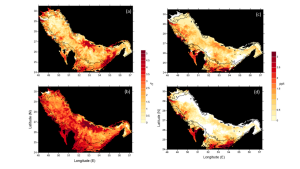
Desalination is essential for water security in the Persian Gulf region, yet its unchecked expansion poses significant environmental risks. Future growth must be accompanied by stringent regulatory frameworks, technological innovations, and comprehensive research to ensure it aligns with sustainable development objectives. Without proactive intervention, the long-term viability of marine ecosystems and regional economies will be compromised. See Figure 5 for a summary of policy recommendations.

